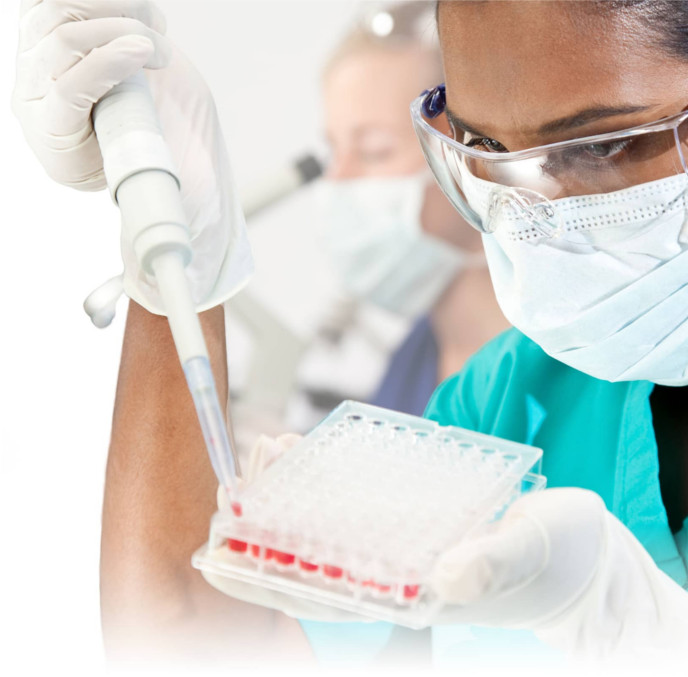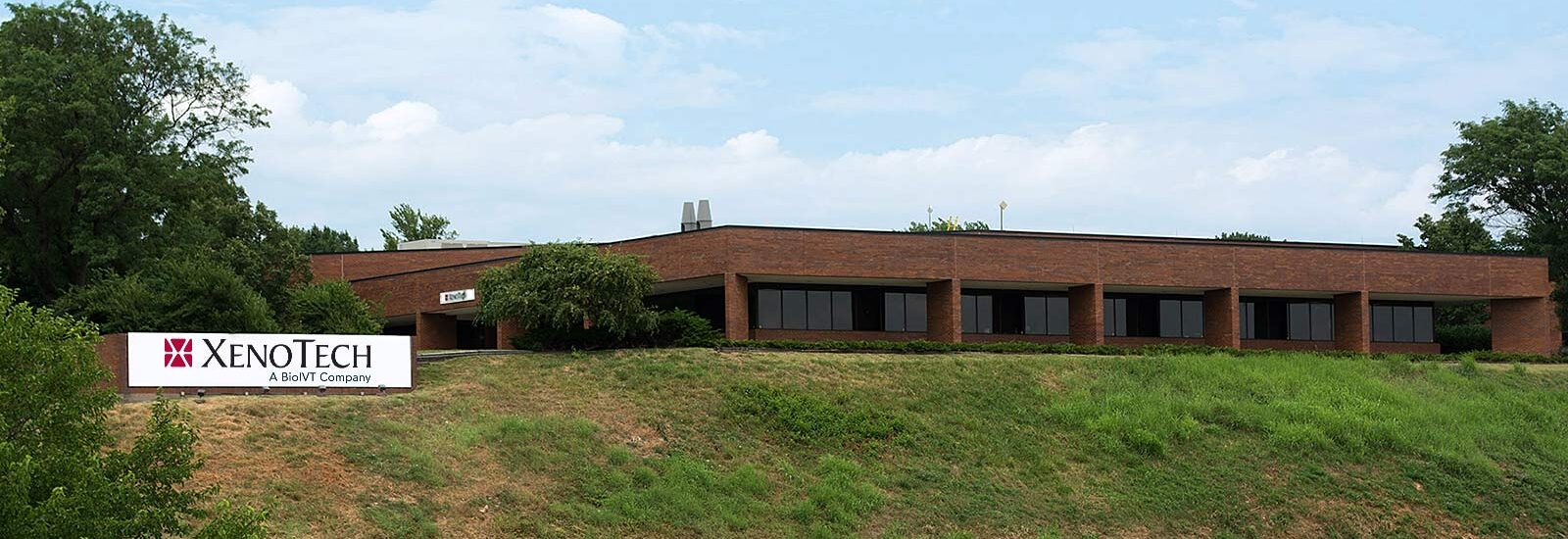
Bioanalytical Services for Nonclinical Testing in Drug Development
Our Analytical Services group offers custom method validation, method qualification, in vivo metabolite profiling studies and non-GLP bioanalytical services for small molecule drugs and intermediate molecule drugs (oligonucleotides, antibody drug conjugates, etc.). For regulated projects, methods are validated in accordance with the Food and Drug Administration (FDA) Bioanalytical Guidance.
Our Approach to Quality Bioanalytical Services
Our Analytical Services department specializes in high-quality support for all the bioanalytical services and analytical needs of our internal contract service groups and for external clients.
The team is highly experienced with custom method development to support sample analysis for all in vitro study types and many in vivo models, as well. We perform LC-MS/MS analysis using triple quadrupole and QTrap mass spectrometers equipped with UPLC systems and rack changers for sensitive and selective quantitation of drug candidates or marker substrates with increased efficiency. We also offer hybridization analysis using ELOSA or PALSAR as well as qPCR when LC-MS/MS is insufficient.
Our chromatographic separation capabilities include techniques such as reverse-phase, ion-pair, HILIC for a wide range of small molecules in various matrices such as plasma, urine, bile, feces and tissue homogenate. We have extensive metabolite profiling and identification expertise with cold and radiolabeled test articles with UV-Vis/PDA/β-Ram detector orthogonal with high-resolution QToF mass spectrometers. The team routinely performs structure elucidation, biotransformation assignments, method development, and bioanalytical services for small peptide drug candidates.

Bioanalysis Services We Offer
Method Validation & Qualification
Our team’s extensive experience, scholastic knowledge of regulatory guidelines and expectations, and strict internal Quality Assurance/Control standards allow validation of developed methods to ensure compliance with current FDA and EMA Bioanalytical guidelines.
In Vivo Metabolite Identification
Our In Vivo Metabolite Identification service involves characterization and identification of metabolites using LC-MS/MS for treated biological matrices including bioanalytical services for whole blood, plasma, feces, urine, or bile from clinical or nonclinical in vivo studies.
Small-Molecule Bioanalysis
Our team can perform Small Molecule Bioanalysis services through high-precision quantitative measurement of a drug compound and/or its metabolites in various biological matrices (urine, blood, plasma, serum, etc.).
Intermediate/“Milli-Molecule” (ADC, Oligonucleotide) Analysis
Our team conducts bioanalysis on molecules with 14-30mer (molecular weight > 4.5 kDa but < 10kDa), such as oligonucleotides, through high-precision quantitative measurement of a drug compound in various biological matrices (urine, blood, plasma, serum, etc.). For oligonucleotides longer than 30mer, please contact us to determine the feasibility.
Toxicokinetic (TK) Analysis
Toxicokinetic (TK) analysis following definitive toxicology studies provide the detailed systemic exposure profile essential for dosing considerations prior to first-in-human (FIH) studies and other clinical phases. The Drug Development Solutions Center can offer GLP-certified bioanalytical follow-up to establish a correlation between a candidate compound’s concentration or dose and its potential toxicity.
Instrumentation Capabilities for Bioanalytical Services
- Multiple AB Sciex API 3000 triple quadrupole, API 4000 QTrap, 4500 triple quadrupole and 5500 QTrap MS/MS systems
- Multiple Xevo TQ-S triple quadrupole
- Xevo G2-XS QTof/Tof
- Xevo G3 QTof
- Waters Acquity UPLC™ systems
- Shimadzu Nexera UHPLC, UFLC and Prominence LC systems with rack changers and column switching oven
- IN/US β-RAM radiometric detectors
- Luminex® 100/200TM System
- MSD® QuickPlex SQ120TM System
- Marker metabolite methods validated according to FDA Bioanalytical Method Validation Guidelines
- LC-UV in-line for qualitative assessment
- Automated liquid handlers (Tecan) for sample preparation
| Human CYP markers | UGT, MAO and others | Animal P450s | Drug Transport |
|---|---|---|---|
| 1′ -Hydroxy midazolam (3A4) | Estradiol-3-β-D- glucuronide (UGT1A1) | Rat Hydroxy- testosterone (2α, 6β, 7α, 16β) | Digoxin (MDR1) |
| 6β-Hydroxy testosterone (3A4) | Chenodeoxycholic acid glucuronide (UGT1A3) | Dog Hydroxy testosterone (6β, 16α) | Prazosin (BCRP) |
| Oxidized nifedipine (3A4) | Trifluoperazine glucuronide (UGT1A4) | Mouse Hydroxy- testosterone (6β, 15α, 16β) | |
| ortho-Hydroxy atorvastatin (3A4) | Naphthol glucuronide (UGT1A6) | Monkey Hydroxy-testosterone (2β, 6β, 16α, 16β) | |
| Acetaminophen (1A2) | Propofol glucuronide (UGT1A9) | ||
| Dextrorphan (2D6) | Morphine-3-β-D-glucuronide (UGT2B7) | ||
| Hydroxy bufuralol (2D6) | Testosterone-β-D glucuronide (UGT2B17) | ||
| 7-Hydroxy coumarin (2A6) | 4-Methylumbelliferyl glucuronide (UGTs) | ||
| Hydroxy bupropion (2B6) | 5-Hydroxy tryptophol (MAO-A) | ||
| 8-Hydroxy efavirenz (2B6) | Dimethylamino benzaldehyde (MAO-B) | ||
| 6α-Hydroxy paclitaxel (2C8) | Vanillic acid (Aldehyde Oxidase) | ||
| N-Desethyl amodiaquine (2C8) | Phthalazone (Aldehyde Oxidase) | ||
| 4′ -Hydroxy diclofenac (2C9) | 5-Aceominosalicylic acid (NAT-1) | ||
| 4-Hydroxy tolbutamide (2C9) | |||
| 4′ -Hydroxy mephenytoin (2C19) | |||
| 6-Hydroxy chlorzoxazone (2E1) | |||
| Hydroxy ebastine (2J2) | |||
| 12-Hydroxy lauric acid (4A11) | |||
| 17α-Hydroxy testosterone (CYP17) |
